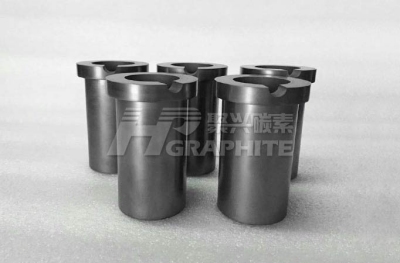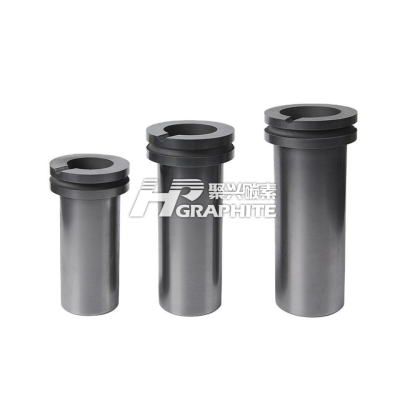【Industry knowledge】Characteristics of Graphite Crucibles

【Industry knowledge】Characteristics of Graphite Crucibles
Graphite crucibles are primarily used for the smelting of metal materials and can be divided into two types: natural graphite and artificial graphite.
Natural graphite crucibles are mainly made from natural flake graphite as the main raw material, with the addition of refractory materials such as clay. They are commonly known as clay graphite crucibles. Those bonded with asphalt are referred to as carbon-bonded crucibles. Crucibles made solely from clay sintering strength are known as clay-bonded crucibles. The former exhibits excellent strength and resistance to thermal shock, making it suitable for smelting ferrous metals, copper, and copper alloys. These crucibles come in various sizes, with melting capacities ranging from 250g to 500kg. They typically include slag skimmers, furnace covers, connecting rings, crucible supports, stirring bags, and other accessories.
Natural graphite crucibles usually contain around 50% clay minerals, while artificial graphite crucibles have impurities (ash content) less than 1%. They are used for refining high-purity metals and high-purity graphite slurries purified through special processes (ash content <20 ppm). Artificial graphite crucibles are commonly used for melting small quantities of precious metals, high-purity metals, high-melting-point metals, and oxides. They can also be used as crucibles for gas analysis in steel production.


The characteristics of graphite crucibles include excellent thermal conductivity and high-temperature resistance. During high-temperature use, they have low thermal expansion coefficients and exhibit certain resistance to rapid heating and cooling. They also have strong resistance to corrosive solutions of acids and alkalis and demonstrate excellent chemical stability. Due to these superior properties, graphite crucibles are widely used in industries such as metallurgy, casting, machinery, and chemical engineering for the smelting of alloy tool steels and non-ferrous metals and their alloys. They offer good technological and economic benefits.
Domestically produced graphite crucibles have reached or even surpassed imported crucibles and possess the following characteristics:
1. The high density of graphite crucibles results in excellent thermal conductivity, which is significantly better than that of other imported crucibles.
2. Graphite crucibles have a specially designed glaze layer and dense forming material on their surface, greatly improving their corrosion resistance and prolonging their service life.
3. After heating, graphite crucibles should not be immediately placed on a cold metal surface to avoid cracking due to rapid cooling.
Graphite crucibles are suitable for melting a variety of small quantities of alloys. When changing the type of alloy, it is only necessary to replace the graphite crucible. Other melting methods such as induction furnaces (with or without crucibles) are suitable for large-scale melting of a single alloy. If the alloy type is changed without replacing the refractory lining, metal contamination may occur. Contact us to learn about the latest price trend of high-quality graphite crucibles.
No related results found








0 Replies